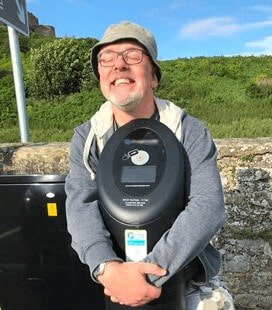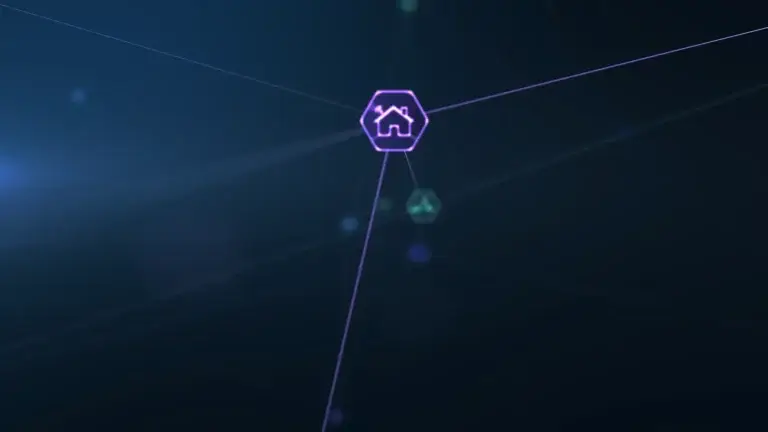The EV Smart Charging rEVolution – Traction Scalability in EVs

About The EV Smart Charging rEVolution Column
I’m Julian Skidmore, a senior software engineer at ByteSnap Design and helping to develop our EV – electric vehicle – charging solutions.
We’re a progressive embedded consultancy with an interest in EVs going back to 2012 when we designed and supplied EV chargers for the London Olympics. I’ve had a 2016 Renault Zoe EV since 2017 and over 20% of us who drive into work use a BEV [Battery Electric Vehicle].
In this monthly series, we’ll be covering EV innovations and our experiences with EVs, particularly from the perspective of EV charging and the charging infrastructure, which we believe is the other half of the EV revolution.
This month we’re looking into…
Traction Scalability in EVs
EVs are great for efficiency[1] and fantastic for torque – even a low-end Renault Zoe can leave pretty much any sporty BMW in the dust at traffic lights. There’s a great Fully Charged article about barriers to adoption[2]. However, it doesn’t cover one major point –
Traction
A colleague raised this earlier this year: the majority pure EVs simply do not have the power nor range to support towing a caravan for any distance.
Even a plug-in hybrid like the Mitsubishi PHEV ends up compromising its engine power for the sake of its electric drive-train, leaving it unable to do well, something other comparable cars can.
Consider a Tesla model X with a 100KWh battery. Its design makes it great at extracting energy from the equivalent of a 10-litre petrol tank, but adding even a fairly small trailer cuts its range by about 40% to 60%[3] – a mere 150 miles from a top-of-the-range Tesla.
Current trends mean that larger batteries are coming to EVs, with 50KWh to 60KWh becoming the norm, but this is still much smaller than the Tesla above. The major insight of course is that EVs are a different concept to fossil fuel cars: we should think of them as mobile power stations that happen to look like cars. Batteries aren’t a direct substitute for petrol tanks (expensive to manufacture, far less energy dense, far more versatile energy source); motors aren’t the same as fossil fuel engines (orders of magnitude fewer parts, radically different form factors, multiple modes of operation); so, we can expect battery powered vehicles to reinvent our society.
Traction Scalability: The Impact on Caravans
Let’s think about how this might impact caravans.
With ICE (Internal Combustion Engine) vehicles this is how it works: the ICE must be powerful enough to tow the caravan, because we don’t usually want the expense and complexity of an engine and tank in it (that’s a motor home) when most of the time it’ll be doing nothing. Also, we don’t want the caravan to merely contain another fuel tank, because it’s not going to be too practical to transfer fuel to the towing car; and we don’t power the appliances in a caravan using the towing vehicle’s fuel (it’s the wrong kind of combustion mechanism). Instead we use propane gas bottles and connect to mains (or solar if available) for lighting.
So, we can see that fossil fuels make caravans complex and consequently less economic. Copying this model on a BEV makes even less sense primarily because batteries are heavy; it would mean carrying around a lot of weight for journeys we hardly use.
But we can easily put a battery in the caravan itself and this would be an improvement, since we only use the battery when we need it. If we did, we wouldn’t be the first[4]. This is what we call Traction Scalability. It’s a general principle, and once we accept we don’t need big batteries we hardly use, we’ll accept we don’t need such powerful electric motors for the rare cases we need them: instead we scale traction to the use-case, placing motors on the caravans themselves, controlled via CAN-bus comms between the two units.
This train of thought leads to interesting places. If it is a waste to keep a battery in a BEV when we’ll barely use it, then it’s nearly as wasteful to keep it in a caravan which spends most of its time going nowhere. The obvious solution is to use it for energy storage, via V2G technology[5] and be covered with solar PV. This means that a caravan then becomes a source of revenue when it’s not doing anything.
Narrow Streets Made Cleaner
A nice side-effect of Traction Scalability is that it has the potential to clean up narrow streets, which are often made virtually impassable due to the sheer quantity of cars parked along them.
That’s because electricity companies are going to want to make optimal use of V2G energy storage and delivery, but as yet there are no concrete plans to fund the massive upgrades to the grid needed to provide high-current connections to every house (see[6]) and also have to deal with the relatively large maintenance issues with trying to provide usable charging and storage for the large proportion of vehicles that must be parked on the road.
Instead, it makes far more sense to consolidate those facilities in street level car parks combined with electricity substations. It’s yet another EV revolution we’ll really like. High current charging, delivery and storage can be integrated into compact locations; maintenance will be much lower and streets can be cleared of cars.
There are additional benefits for security and insurance, because vehicles would be kept in managed locations (with cameras); yet taken off-road and maintained under autonomous environments. They will be far less likely to be stolen or damaged and insurance companies would be able to lower their premiums for customers.
EVs would be just as easy for homes that lack drives, but accessibility would be just as high thanks to e-hailing, and P2P shared EVs[7] can do something useful until their next trip.
Thinking about e-hailing leads us to the other end of Traction Scalability. If it doesn’t make sense for a car to waste battery capacity that’s hardly being used except on long journeys or when carrying a significant weight, then for the future culture of public EV travel; it doesn’t make sense for the majority of cars to have large batteries either. This is true, even though there are studies that show a larger battery that’s charged and discharged less aggressively than a small battery degrades much more slowly.
And this seems unintuitive: larger batteries last longer so surely they’re always better? But that’s not the case, because what matters most of all isn’t the number of charging cycles, but the total usable distance we can get from a battery.

This is why the majority of future EVs will be optimised for smaller batteries, shorter journeys and low weight, especially if they’re P2P or autonomous e-taxis. Let’s look at the maths, comparing a single 41KWh Zoe (at 4mi/KWh); a Twizy-like e-taxi (which can achieve 56mi/6.1KWh [100Kg] = 9.2 miles / KWh) and a hypothetical sub-Twizy like e-taxi achieving 20 miles from a (2.2KWh battery, giving 10.4 miles per KWh).
Given that the average number of passengers will be 1.4, what’s the total distance that can be delivered and the number of passengers per KWh per KWh of battery?

So, what this means is that the smaller cars deliver 2.3x to 2.6x better utilisation from a battery and because the sub-Twizy vehicle can transport 18 passengers (about 12 vehicles) per KWh, it amounts to 18x the possible income rate for transport at 38% of the electricity cost, which itself is a fraction of fossil fuel transportation costs.
Conclusion
Traction Scalability is the concept of matching EV battery capacity to an appropriate use-case. It makes sense in a way that it doesn’t for fossil fuel vehicles, because an EV is essentially a mobile power station rather than merely a mobility solution.
Currently, average batteries are getting bigger, but the constraints of energy density in EV batteries force us to optimise their utility at all scales.
The versatility of electric vehicle technology means we have more opportunities to provide applications for the environment, energy, security, congestion – as well as revenue streams – again, at every scale.
[1] https://insideevs.com/news/332584/efficiency-compared-battery-electric-73-hydrogen-22-ice-13/
[2] https://youtu.be/9k7k3Mzknm8
[4] https://electrek.co/2018/08/27/camper-for-electric-cars-battery-pack-electric-motors-solar-panels/
[5] https://en.wikipedia.org/wiki/Vehicle-to-grid
[6] https://www.bbc.co.uk/news/uk-44759150
[7] https://en.wikipedia.org/wiki/Shared_mobility
[8] table from: https://cleantechnica.com/2018/08/26/the-secret-life-of-an-ev-battery/
How can ByteSnap help you today?
From start-ups to blue chips, ByteSnap’s embedded systems software developers are enabling companies to stay a step ahead by providing them with bespoke solutions. Maintain your competitive edge – contact us today and let your business be among them!




